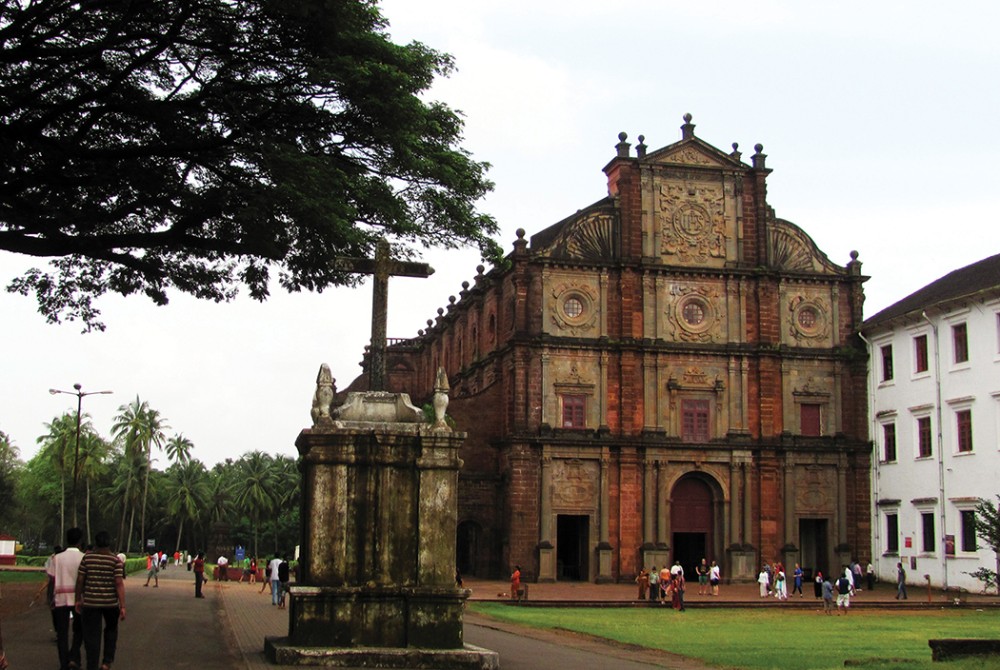Goa, the Rome of the East
India's 20 million Catholics don't seem to mind that their faith looks pretty European.

UNESCO identifies World Heritage Sites for their special significance in global consciousness. They earn that status either for their natural beauty or else for their role in human history and culture. India has over 40 such sites, which naturally include such imperishable splendors as the Taj Mahal and Delhi’s Red Fort. Surprisingly for Western observers, another star attraction is a spectacular cluster of Christian buildings that commemorate a heroic phase of mission.
This site is properly known as the Churches and Convents of Goa. Although the European settlement of Goa dates from 1510, Portuguese adventurers had been active in the area for decades before that. They retained their military dominance until the late 17th century, when they were displaced by other European powers. Even so, Goa remained the capital of Portuguese colonial power until 1961, when it was forcibly annexed by the new Indian nation.
Read our latest issue or browse back issues.
Initially, those European newcomers had little idea of the complex religious world into which they were entering beyond a vague sense that there might be ancient Christian communities somewhere in those parts. Some Portuguese took a good while to work out that the local Hindu temples were not in fact exotic (if startlingly deviant) Christian churches and that the ornate multi-limbed statues of Hindu deities were not really figures of unknown saints.
Following the Reformation, as the Portuguese became more deeply committed to a reinvigorated Catholicism, their missionary goals became more explicit. Besides engaging in outreach to Hindus and Muslims, Catholics struggled to bring those ancient Christian communities into full allegiance and conformity to papal power. In 1560, the Inquisition began operating in Goa.
Colonial Goa boomed, achieving at its height a population of some 200,000. As “the Rome of the East,” it was the base for Jesuit and Franciscan activities in Asia, a stepping-stone for such legendary missionaries as Francis Xavier. Between 1542 and 1552, Francis undertook missions in southern India and Sri Lanka, but his real goal lay further afield, in China and Japan.
Throughout his career, Francis worked to introduce the Christian faith in its fullness, rather than merely imposing the token allegiance that his predecessors had demanded. After his death on the Chinese coast, his body was brought back to Goa, to the Basilica of Bom Jesus, where it became the focus of pilgrimage and devotion. Supposedly, the body has defied corruption ever since.
In many European cities, a knowledgeable observer can read the history by means of the great buildings through the dedications of the churches and the successive power of various religious orders. In that sense, Goa can look like a great Mediterranean city somehow wrenched out of its natural context and dropped on the shores of western India. Of course, the splendid See Cathedral proclaims Tridentine piety, as do other clearly Counter-Reformation sites. One church is dedicated to Our Lady of the Rosary, another to Divine Providence, and the Franciscans had their church of St. Francis of Assisi. For centuries, the Cathedral of Santa Catarina was by far the largest church in Asia, until it was challenged by modern megachurches. To varying degrees, all of the seven main structures are architectural glories, demonstrating European art traditions at their most spectacular. Naturally, they represent an enormous and enduring tourist attraction for Westerners and Asians alike.
To modern eyes, the undiluted importation of those European traditions is deeply problematic, suggesting as it does an arrogant failure to enculturate Christianity in local cultures and contexts. The same issue emerges from southern India’s other great basilicas, healing shrines, and pilgrimage centers, all of which bear a strongly European cast. Velankanni in Tamil Nadu is called “the Lourdes of the East,” and the building could easily stand in traditionally Catholic southern Europe. From early times too, Goa’s Catholic authorities decreed that local converts should adopt Western (that is, Iberian) names.
However disturbing that seeming tone deafness to local cultures might be for Westerners, it rarely troubles India’s own 20 million Catholics, whose devotion to Tridentine forms and architectural styles now dates back some 15 generations. Whatever its origins, that culture is now absolutely rooted in Indian soil and Indian families.
Like Catholics everywhere, India’s believers have come to terms with modern reforms in liturgy and architecture, but a sizable core of conservatives remains. Most would feel badly cheated if they lost their long-familiar buildings and devotions.
The modern state of Goa is nothing like as overwhelmingly Catholic as it was in Portuguese times, and the proportion of Hindus now approaches two-thirds. This does not mean that overall Christian numbers have shrunk but rather that many Goan Catholics have relocated far afield, whether to other parts of India or to Britain or the Arab Gulf. Wherever they move, new Catholic churches arise, commonly on those stubbornly traditional lines. As so often before in church history, mission breeds mission.
A version of this article appears in the August 30 print edition under the title “Goa, Rome of the East.”






